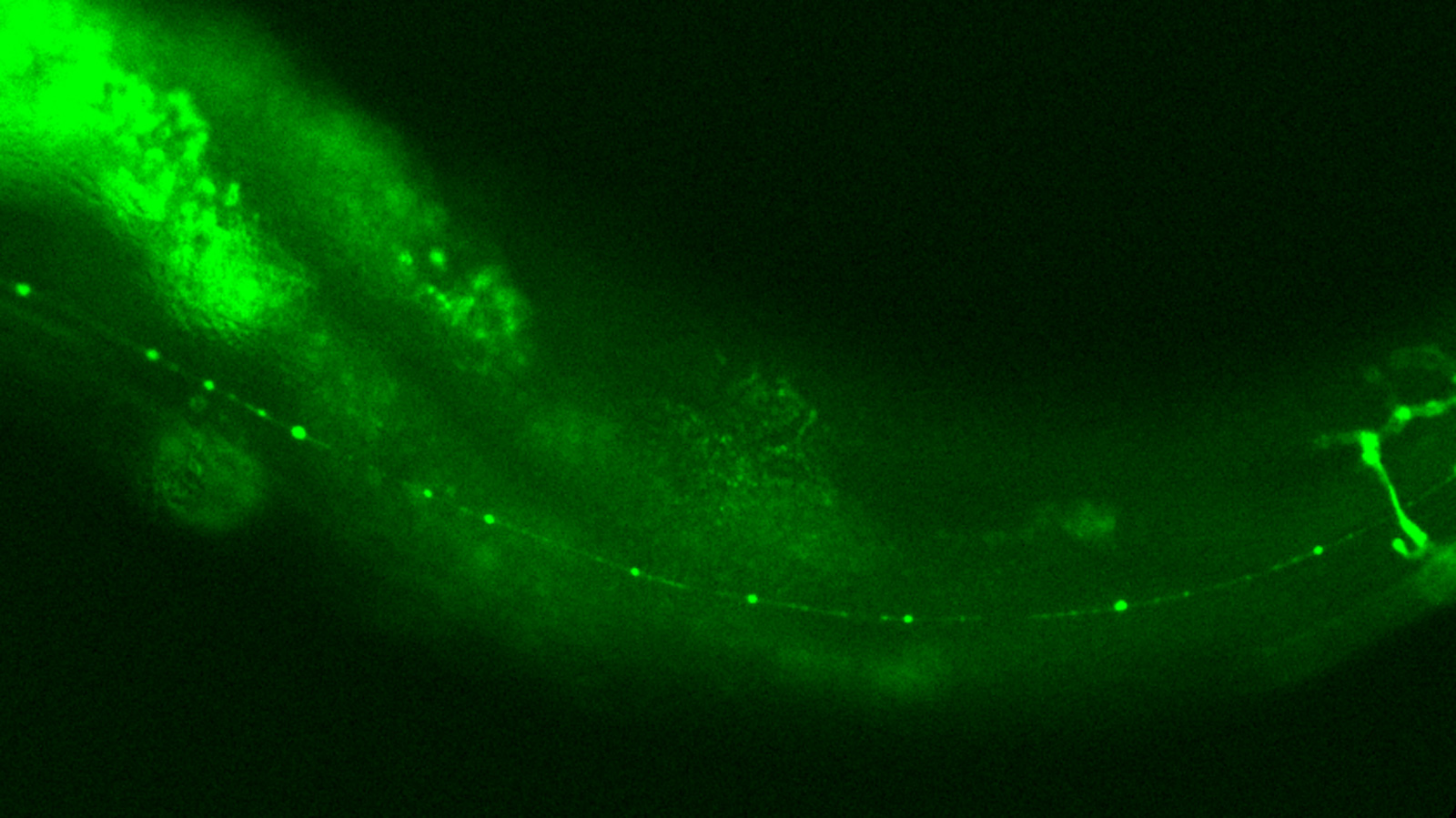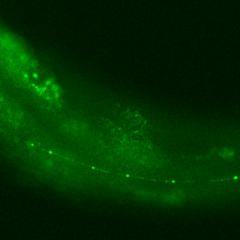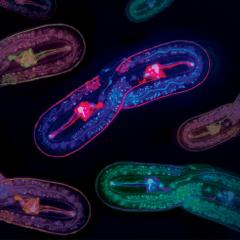

A discovery in a transparent roundworm has brought scientists one step closer to understanding why nerves degenerate.
University of Queensland researchers have identified a key molecule that protects the axons of nerve cells from degenerating.
Queensland Brain Institute researcher Associate Professor Massimo Hilliard said axons – long, thread-like nerve cell sections that transmit information – were often the first parts of neurons destroyed in neurodegenerative disease.
“Using roundworms we identified the lin-14 molecule as being crucial to protecting the axon,” Dr Hilliard said.
“When this molecule is lacking, the axon spontaneously degenerates.”
Nerve axons are damaged in neurodegenerative conditions including Alzheimer’s disease and Parkinson’s disease.
The researchers studied roundworm Caenorhabditis elegans (C. elegans), a small organism about one millimetre long with only 302 neurons.
C. elegans was the first multicellular organism to have its genome sequenced.
Co-lead researcher Fiona Ritchie said it enabled researchers to study neurons on a molecular and genetic level.
“What was surprising is that the lin-14 molecule is not only necessary within the axon, but also needs to be present in the surrounding tissue,” she said.
“Our research highlights that complex connections between axons and their surrounding environment are critical for the survival of the axons later in life.”
Dr Hilliard said the discovery created new avenues for researchers seeking to limit the degenerative process.
“Although this particular molecule doesn’t exist in humans, I don’t think we can exclude that similar mechanisms with a similar role may exist in humans,” he said.
“The next step is to better understand the interactions between axons and their surrounding tissue, as well as to look for similar molecules that mediate the same degenerative process in humans.”
The study, led by Fiona Ritchie and QBI’s Justin Chaplin with key collaborators including Monash University’s Dr Brent Neumann and California State University’s Professor Maria Gallegos, is published in Cell Reports.
Media: Donna Lu, +61 405 661 856, communications@qbi.uq.edu.au; Associate Professor Massimo Hilliard, m.hilliard@uq.edu.au.






